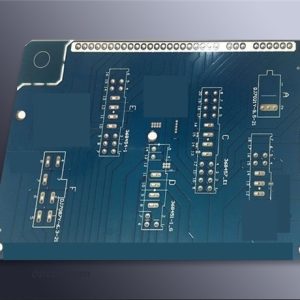Aluminum PCB for LED is a metal based copper clad board with good thermal conductivity, electrical insulation performance, and mechanical processing performance. At present, the common material for PCB aluminum substrate is metal based copper clad board (mainly aluminum based and copper based, with a small portion being iron based). Metal aluminum based copper clad board is made of electronic fiberglass cloth or other reinforcing materials soaked in resin, single resin, etc. as an insulation and bonding layer, and one or both sides are covered with a joint and heated to produce a one-stop board like material. It is mainly used for processing and manufacturing PCB substrates, and is commonly used in television, radio, computer,mobile communication, and LED lighting.

What are the advantages of LED aluminum based circuit boards:
1. The heat dissipation is significantly better than the standard FR-4 structure.
2. The dielectric used is usually 5 to 10 times the thermal conductivity of traditional epoxy glass and 1/10 of its thickness.
3. The heat transfer index is more effective than traditional rigid PCBs.
4. The copper weight shown in the low dry IPC stack recommendation chart can be used.
Aluminum based copper clad board is a metal circuit board material, which is composed of copper foil, thermal insulation layer and metal substrate. Its structure is divided into three layers:
1. Circuit layer: It is equivalent to a summer copper board of a regular PCB, with a copper thickness of loz to 10oz for the circuit.
2. Dielectric layer: The insulation layer is a layer of thermal conductive insulation material with low thermal resistance.
3. Base layer: It is a metal substrate, usually aluminum or optional copper. Aluminum based copper clad panels and traditional epoxy glass cloth laminates. The circuit layer (i.e. copper foil) is usually etched to form a printed circuit, connecting the various components of the component to each other. Generally, the circuit layer requires a large current carrying capacity, so thicker copper foil should be used, with a thickness of generally 35um~280um; Thermal insulation layer is the technology of aluminum substrate. It is usually a special polymer filled with special ceramics.
Overall, LED aluminum substrate is a unique metal based copper clad plate with good thermal conductivity, electrical insulation performance, and mechanical processing performance. LED manufacturers can use aluminum substrates to solve LED heat dissipation problems, as aluminum has a high thermal conductivity and good heat dissipation, which can effectively export internal heat. The LED aluminum substrate adopts surface mount technology (SMT) to effectively treat thermal diffusion in circuit design schemes, reduce product operating temperature, improve product power density and reliability, and extend product service life. When designing, it is also important to place the PCB as close as possible to the aluminum base to reduce the thermal resistance generated by the potting adhesive.
If you wanna custom aluminum PCB for LED, why not choose opcba.com. We will be your great partner to provide the service you want.

分享到: